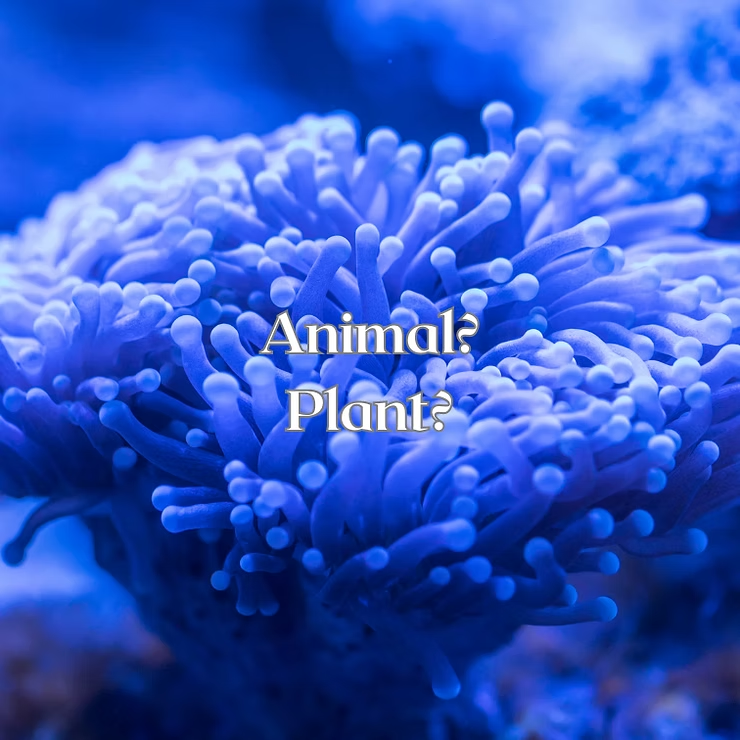Introduction
Corals are fascinating creatures that have long puzzled scientists. While often mistaken for plants due to their stationary nature and symbiotic relationship with algae, corals are in fact animals belonging to the phylum Cnidaria. They are the architects of reefs, shaping some of the most diverse ecosystems on Earth. This article explores whether corals are animals or plants, their anatomy, reproduction, importance, and the threats they face.
Key Takeaways
- Corals are animals belonging to the phylum Cnidaria, not plants.
- They build reefs that provide habitats for countless marine species.
- Polyps and skeletons form the foundation of coral reef ecosystems.
- Corals reproduce both sexually and asexually, ensuring survival and growth.
- They play critical roles as ecosystem engineers and biodiversity hotspots.
What Are Corals?
Corals are often misunderstood because of their plant-like appearance. In reality, they are animals that live permanently attached to substrates. Their survival depends on their partnership with microscopic algae called zooxanthellae, which provide energy through photosynthesis. In return, corals offer these algae shelter. Beyond their beauty, corals are vital to marine ecosystems, creating habitats that sustain an extraordinary variety of life.
Are Corals Animals or Plants?
Although they resemble colorful underwater gardens, corals belong to the animal kingdom, specifically cnidarians—a group that includes jellyfish and sea anemones. Their plant-like appearance comes from their algae partners and branching structures, but make no mistake: corals are living animals with complex life processes.
- They maintain a symbiotic relationship with algae, exchanging food and shelter.
- They construct skeletons of calcium carbonate, which form reef frameworks.
- Some coral species can live for centuries, making them among Earth’s oldest animals.
The Anatomy of a Coral
Polyps: The Coral’s Secret Weapon
Corals are made up of polyps—tiny tentacled animals with stinging cells called nematocysts to capture prey. Each polyp secretes calcium carbonate to build protective skeletons, contributing to the reef’s growth. Living in colonies, polyps share resources, creating a cooperative network that functions like a bustling city beneath the sea.
Coral Skeletons: Nature’s Architecture
The calcium carbonate skeletons of corals form intricate, three-dimensional frameworks that provide strength and shelter. These structures not only resist strong waves but also create hiding spaces for countless marine species. Coral skeletons are durable, with growth rates ranging from 1 to 10 centimeters per year depending on environmental conditions.
Coral Reproduction
Sexual Reproduction
During spawning events, corals release eggs and sperm into the water, leading to fertilization. The resulting larvae drift before settling on suitable surfaces, where they transform into polyps and form new colonies. This process maintains genetic diversity and strengthens coral populations.
Asexual Reproduction
Corals also reproduce by budding, creating genetically identical polyps that rapidly expand colonies. This “cloning” ability allows them to colonize new areas efficiently, ensuring survival in challenging conditions.
The Importance of Corals
Ecosystem Engineers
Corals shape marine environments by building reefs that support fish, crustaceans, and invertebrates. Their structures also protect coastlines from erosion, provide food, and sustain tourism economies worldwide.
Biodiversity Hotspots
Although coral reefs cover less than 1% of the ocean floor, they support about 25% of all marine life. These ecosystems shelter thousands of fish species and hundreds of coral types, making them one of the richest biodiversity zones on the planet.
The Threats to Coral Reefs
Climate Change
Rising sea temperatures cause coral bleaching, where corals lose their algae partners and become vulnerable. Ocean acidification further weakens coral skeletons, threatening the future of reefs and the species that depend on them.
Human Activities
Pollution, overfishing, and destructive practices like dynamite fishing damage reefs worldwide. Agricultural runoff and chemical discharges disrupt reef balance, while unsustainable harvesting depletes marine life crucial for reef health. Conservation measures and sustainable practices are essential to reverse these impacts.
Conclusion
Corals are animals, not plants, and they serve as the foundation of reef ecosystems. With their polyps, skeletons, and remarkable reproductive strategies, they sustain biodiversity and protect coastlines. Yet, climate change and human activities threaten their survival. Protecting corals is critical—not only for their beauty but also for the countless species and communities that depend on them.
Frequently Asked Questions
Are corals plants or animals?
Corals are marine animals belonging to the phylum Cnidaria.
Do corals have brains?
No, they lack brains but have a simple nerve network.
How do corals feed?
Corals extend tentacles to capture plankton and absorb nutrients from the water.
Can corals move?
They remain attached to the seafloor but move tentacles and polyps to feed.
What is coral bleaching?
It occurs when corals expel their algae due to stress, turning white and weakening.
What are the main threats to reefs?
Climate change, pollution, overfishing, and destructive human activities.
How can we protect coral reefs?
By reducing carbon emissions, promoting sustainable fishing, and establishing marine protected areas.

